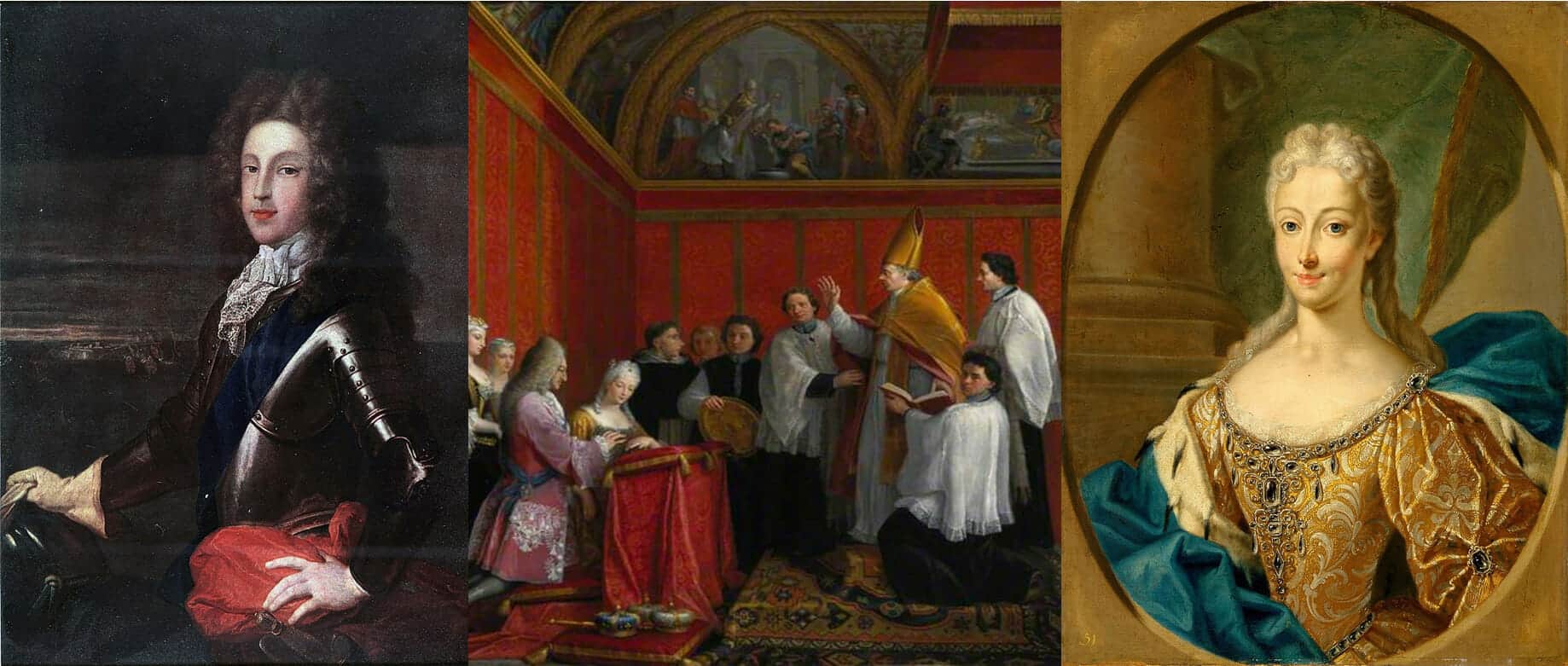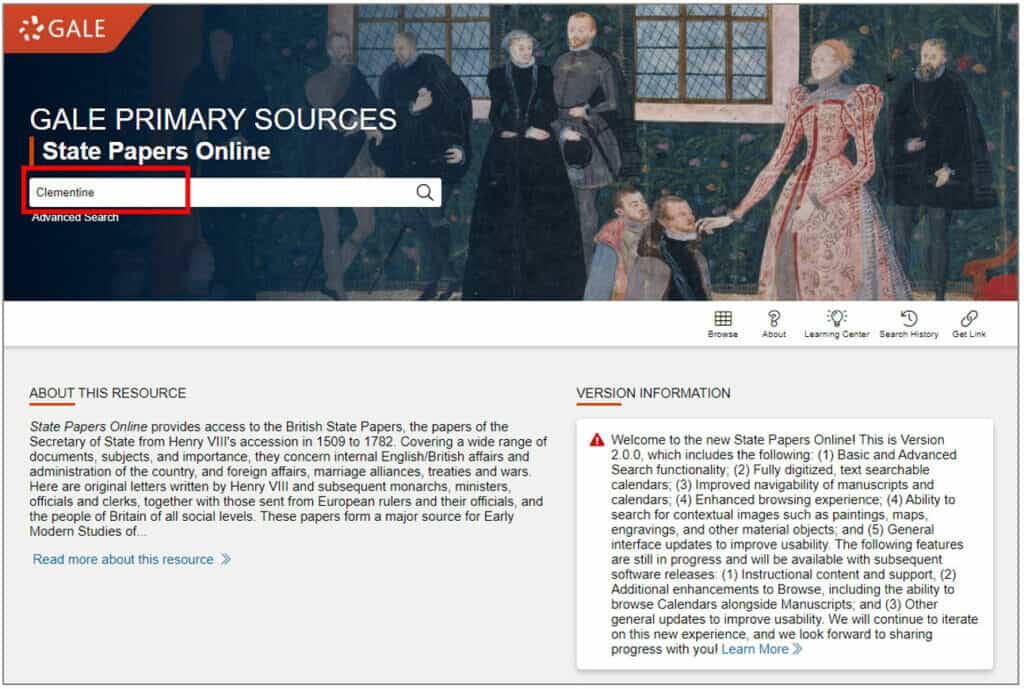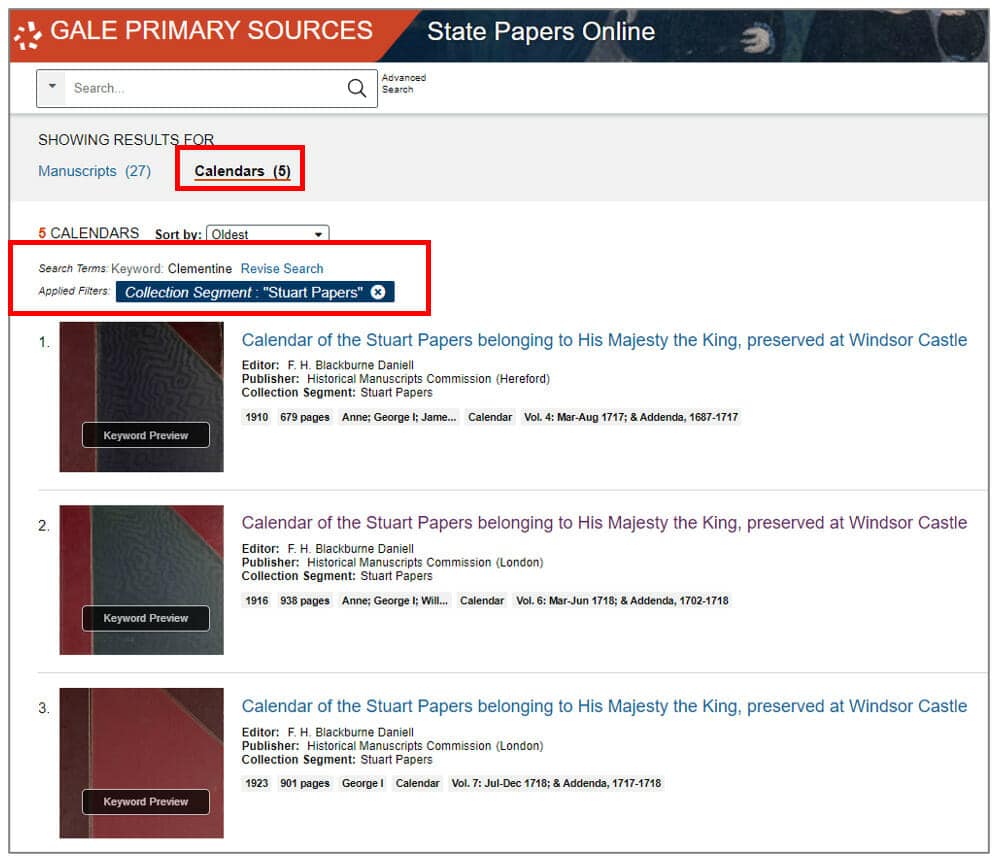|By Rose O’Connor, Gale Ambassador at Maynooth University|
The Stuart and Cumberland Papers from the Royal Archives, Windsor Castle document the lives of the exiled Stuarts, from the Glorious Revolution in 1688 to the death of the last Stuart heir, Henry Benedict, Cardinal Duke of York in 1807. The Jacobite movement was the struggle, conducted through military and diplomatic means, by the exiled Stuarts and their supporters to regain the English throne. The Stuart and Cumberland Papers archive contains a wide variety of sources on this period of history. From the daily operations of the Stuart government in exile to the details of failed rebellions, there is plenty of material here to assist a political or military historian wishing to investigate eighteenth-century politics in Europe. However, this blog post is going to show you how the sources are also of great use to cultural historians. By reading the same sources, but noticing different details, this is a great way to help with your own essay writing. Let me show you some examples.
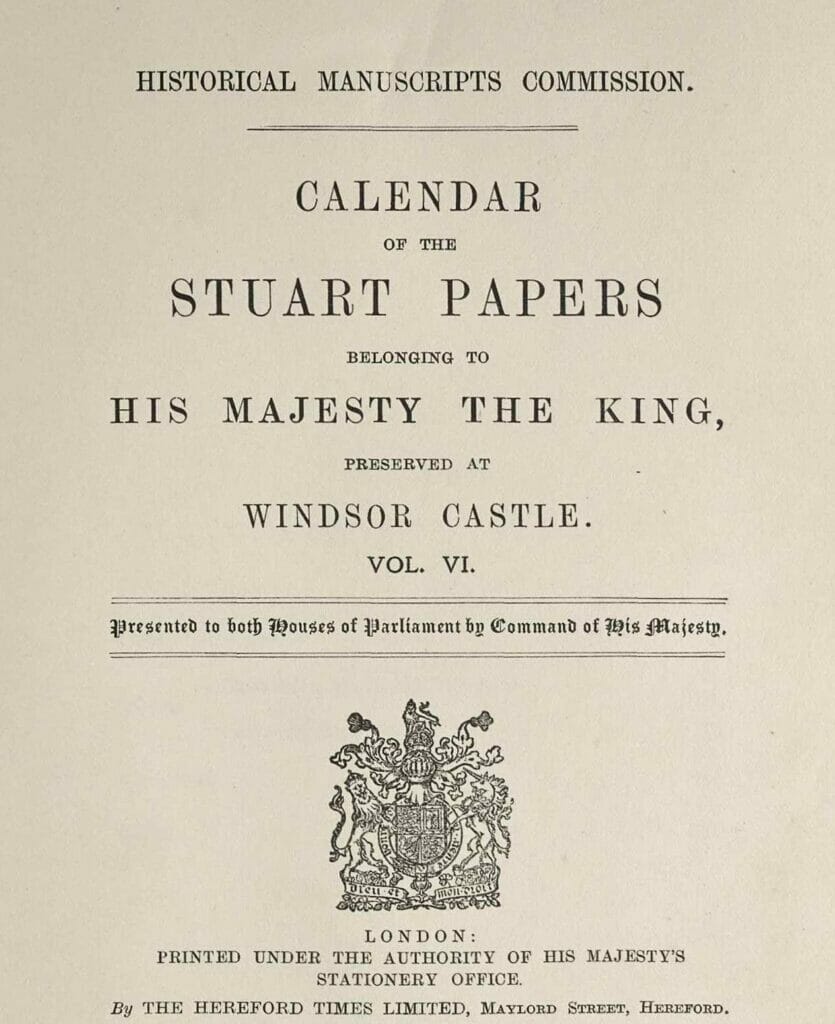
Studying Family Dynamics in Royalty
While studying family history from a cultural perspective has only recently come to the fore, this online database can certainly help us identify the role of children within the family and their historical and cultural importance. One example I found was a letter about the description of Princess Clementine Sobieska, the youngest daughter of Prince Sobieski of Poland. In 1718, the Stuart court was trying to arrange a suitable marriage for James III, and this letter was the initial description of her sent to the court.
Initially, it discusses her behaviour in the family as a result of her being the youngest: ‘She is about 15 and… her parents are in appearance much more particularly fond of her than of the [other two daughters].’ I find it really interesting to see how cultures and societies over the centuries can share similarities – such as the youngest child getting more attention than older children! Does this happen in your country today, perhaps?
This letter describing Clementine as a potential wife for James III goes into further detail about Prince Sobieski’s love for his youngest daughter who was ‘the darling both of father and mother’ and that ‘if a certain match were proposed, he would go near to make it perhaps double [the dowry] of the eldest.’ While this letter is about political dealings, this is a great example of how letters like this can also show us a lot about culture, society and relationships.

History of Beauty
Moving on from the history of family dynamics, this same source can also be used to study the concept of beauty in the Stuart court. This letter which describes the potential bride for James Edward Stuart also describes her features, and whether they are considered positive or negative. The letter initially describes the princess as having light brown hair, good skin and black lively eyes. The fact that these were the first characteristics that were mentioned suggest these were some of the most important traits to disclose.
Further on, the writer elaborates with more unusual descriptions (by twenty-first century standards), such as explaining that her neck is ‘very good and rising’ and that her features are ‘rather genteel than beautiful.’ These comments show great potential to cultural historians to investigate what genteel features meant, and how this differed from beautiful features, as well as the perceived benefits of a ‘rising’ neck.
Additionally, the writer does voice a small concern that Princess Clementine is a little small and thin, presenting this negatively. However, he assures the court that Clementine’s older sister Charlotte was also small and thin at Clementine’s age but has since grown into a ‘very fine size and shape.’ This part of the letter can offer a great deal to cultural historians who wish to investigate the history of perceptions of beauty among the nobility. Beauty is in the eye of the beholder – but how was it typically interpreted by people in the past, and what other insights can we glean about society and culture when we get closer to understanding historic views on the concept of beauty?
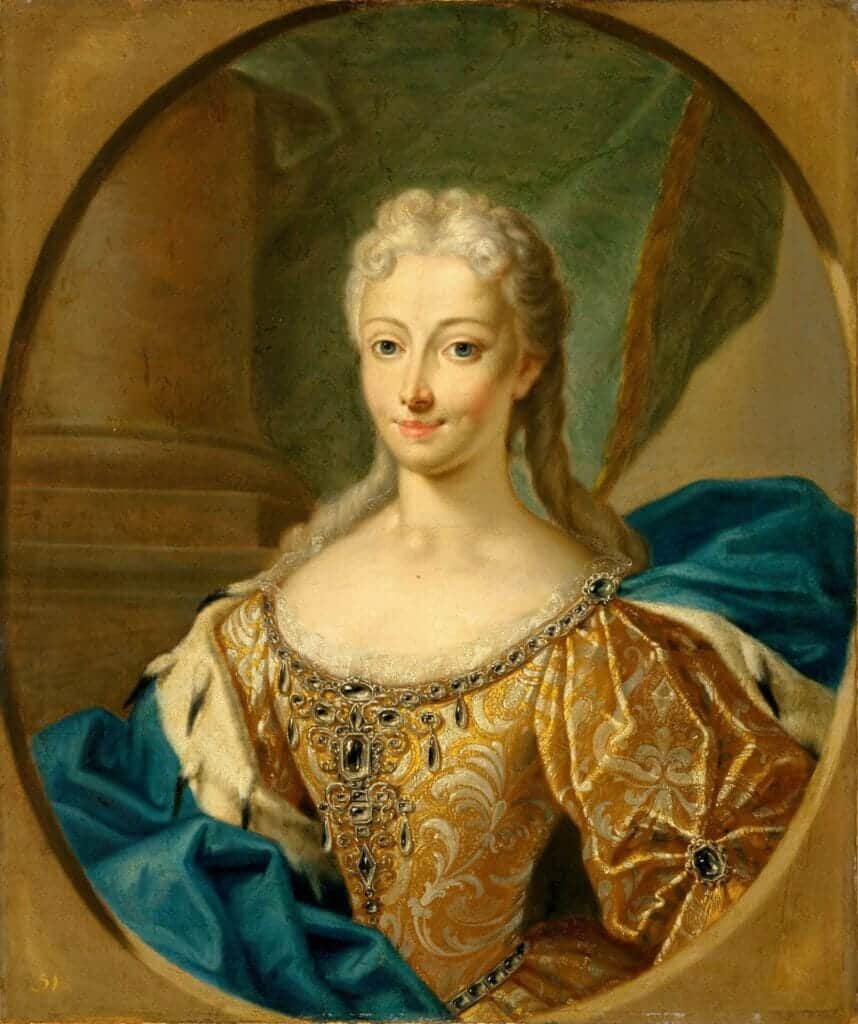
Finding Sources in State Papers Online
Below I wanted to show you how easy it was to locate this fascinating source. By searching for ‘Clementine’ in State Papers Online, the Gale platform scans through the entire archive series and highlights what you’re looking for – an invaluable tool for students or historians with upcoming deadlines!
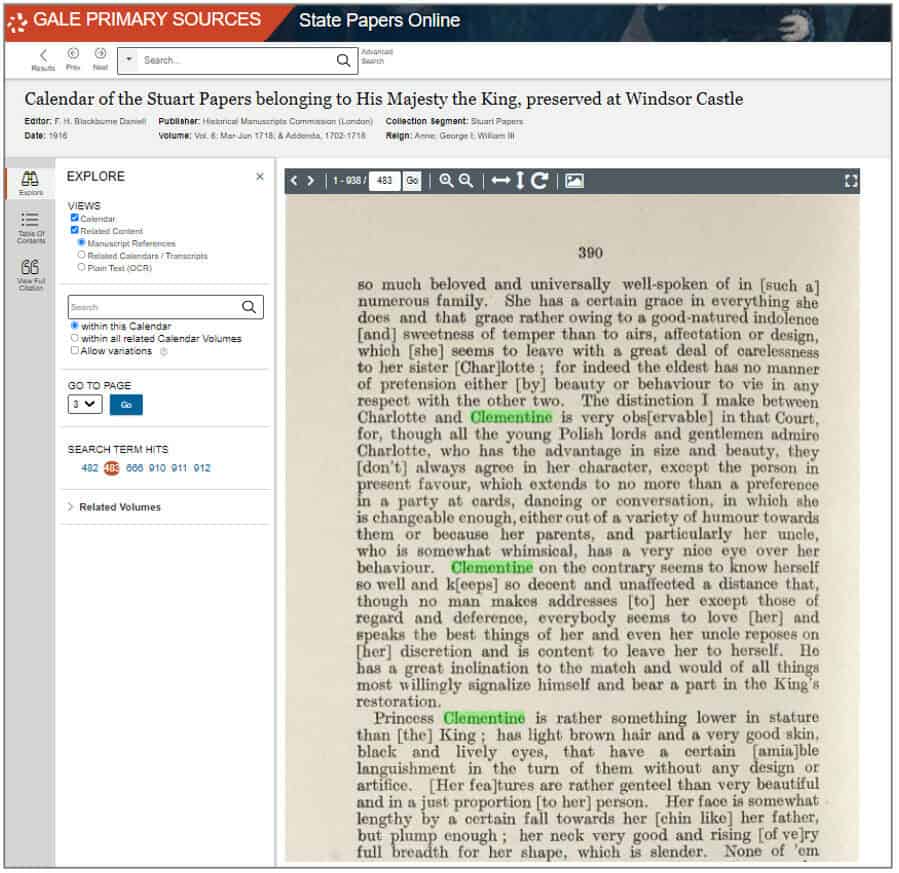
Blackburne Daniell, F. H., editor. Calendar of the Stuart Papers belonging to His Majesty the King, preserved at Windsor Castle. Vol. 6, Historical Manuscripts Commission, 1916. State Papers Online, https://link.gale.com/apps/doc/MC4892600001/SPOL?u=webdemo&sid=bookmark-SPOL&xid=faf55f2d&pg=483
And for those interested in seeing fascinating historic handwriting, below is the related manuscript for the calendar above. (State Papers Online makes it very easy for users to move between Manuscripts and the equivalent Calendar).
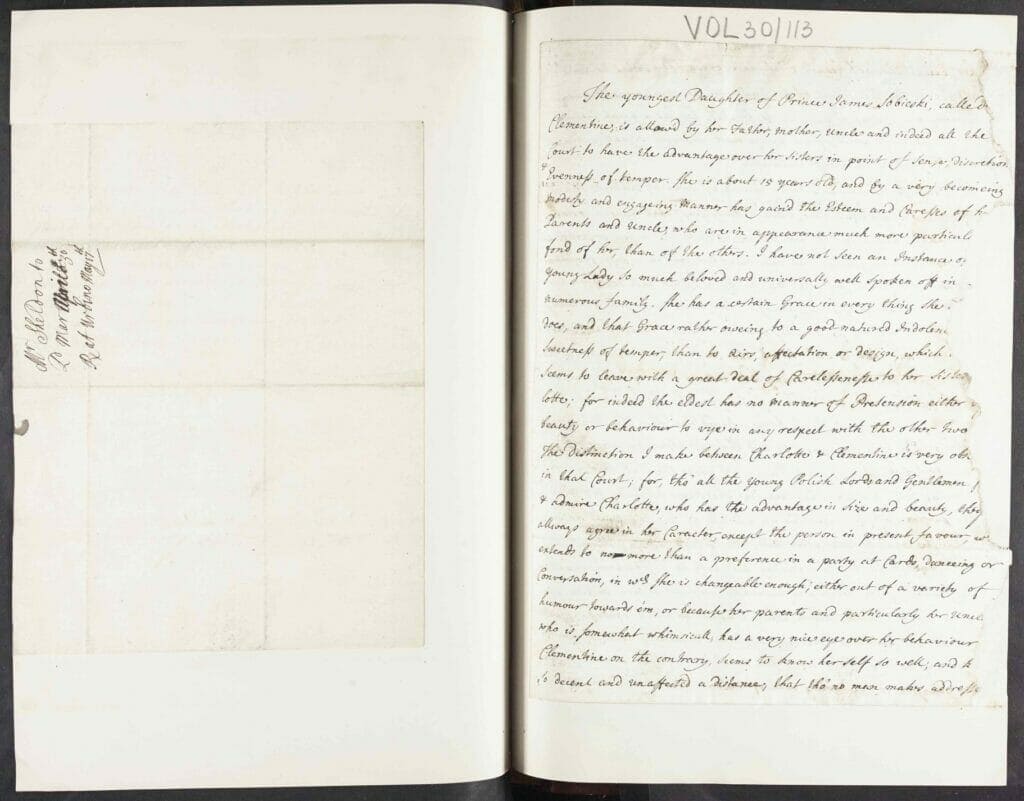
The History of Courting Among European Nobility
Turning back to the story of James and Clementine, I found another document from a few months later which describes the process of courting. This letter gives instructions from the court to another James, James Murray, to evaluate Princess Clementine before Prince James will propose to her. The orders in the letter consist of trying to get Clementine and her sisters to Italy to meet him in the Vatican, and asking Prince James if he has any matches in his head. It explains further that once James Murray has heard the Prince’s thoughts, he is to indicate that the court would find marriage to Princess Clementine as advantageous.
In the list of orders, order number seven shows great insight into the mechanisms of marriage alliances among European nobility, whether they are in exile or not.
‘In case the proposed match betwixt the Princess Charlotte, the Prince’s [Sobreski’s] second daughter… should chance to be broke off when you come to the Prince’s Court, and you think her more agreeable and desirable than Princess Clementina, you are not to purpose the match for the last, but inform us of it, and wait our further orders.’
While this document is about securing marriage between Prince James and Princess Clementine, the machinations of power in the Stuart Court are clear – they wish to be kept informed if the second daughter of the Prince of Poland’s betrothal is broken off, as this could alter any plans to propose to Clementine. This document does show how vital marriage alliances are in the Stuart Court to acquire power and fulfil their goals of one day returning to England, but it is also interesting that this is considered in combination with ‘how agreeable and desirable’ the princesses are.
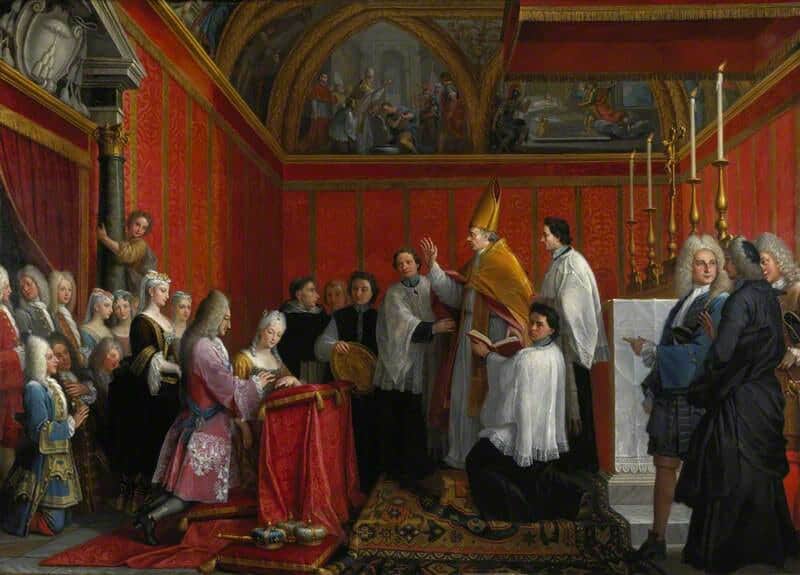
Innovation Among Established Sources
While The Stuart and Cumberland Papers from the Royal Archives, Windsor Castle database has a great number of sources of political intrigue, failed rebellions, and attempts at acquiring power, I have shown you the potential use of sources from a cultural analysis perspective, rather than a military or political one. The history of the family cluster, the history of beauty and the complexities of courting among nobility are all areas which have great potential for further study.
Feel free to have a look yourself, and let us know on Twitter what you’ve found, tagging in @GaleAmbassadors!
If you enjoyed reading about State Papers Online, the Jacobites, royal intrigue and studying primary sources in a new light, check out:
- ‘A Tale of Two Collections’: The Stuart Papers and Cumberland Papers at the Royal Archives, Windsor Castle
- The Stuart Papers: from Neglect and Oblivion to the Royal Archives, Windsor Castle
- Stories from the Jacobite Court in Exile: Sir David Nairne and his daughter, Lady Ramsay
- The Mystery of the Jacobite Poet
- How State Papers Online Can Support an Undergraduate History Dissertation
- Collection Highlights – State Papers Online Eighteenth Century, Part IV: Scandinavia, Eastern Europe and Turkey
- Politics and Personalities in the State Papers of Western Europe, 1714-1782
Blog post cover image citation: A montage of images in this post, combined with ‘Jacobite broadside – Coloured portrait of Prince James as young man’, available on Wikimedia.

